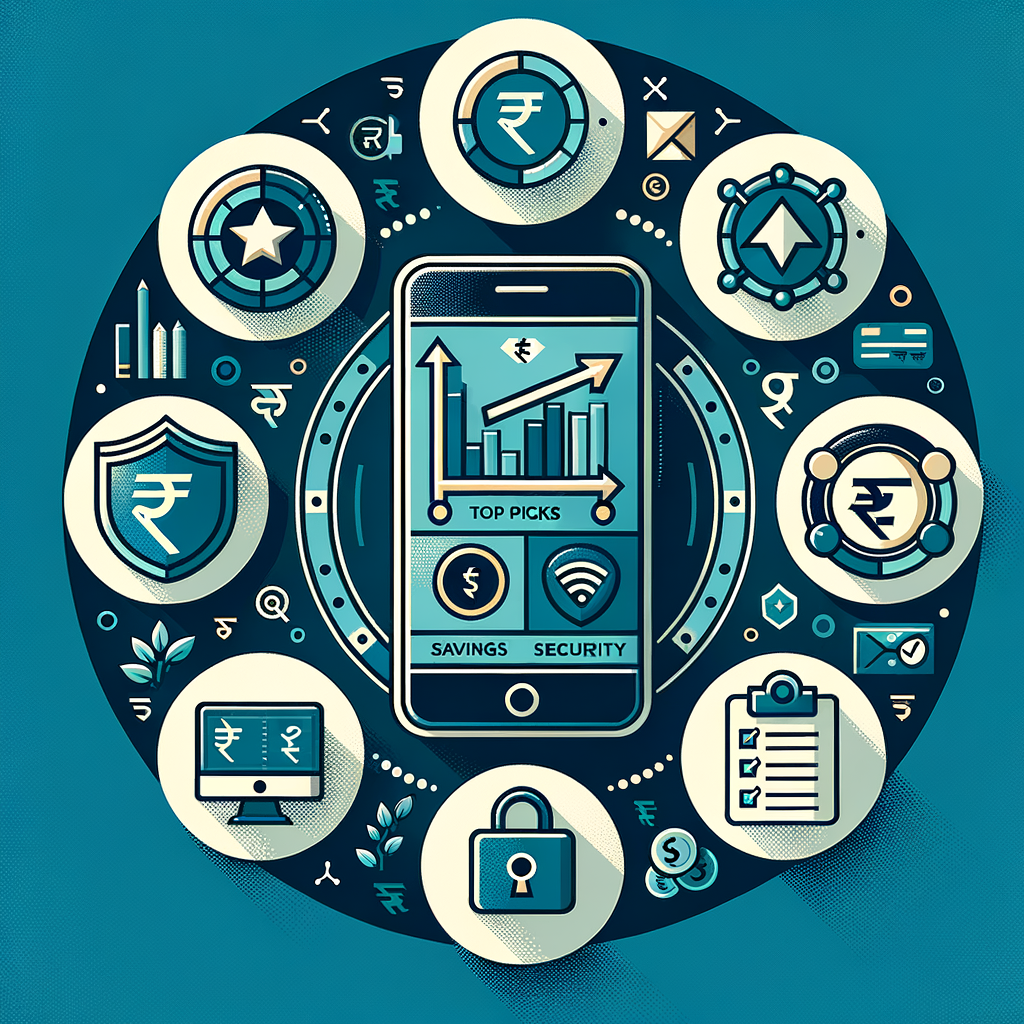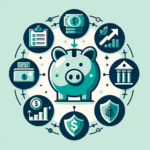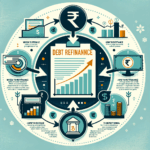The Best Debt Management Apps for 2025: A Guide for Indians
Introduction
Juggling multiple EMIs, credit card bills, and loan due dates can be overwhelming. For many salaried individuals and small business owners in India, keeping track of every single payment is a constant source of stress and anxiety. Missing a single payment, even by a day, can lead to hefty late fees and a damaging impact on your CIBIL score, which in turn affects your future financial opportunities, from getting a new loan to even securing a rental agreement. This is where technology comes to the rescue. Modern debt management apps are powerful tools designed to simplify your financial life, consolidate all your liabilities into one clear view, and put you on a structured path to becoming debt-free. In this comprehensive guide, we will explore why you need these digital tools and review the best debt management apps India 2025 has to offer, helping you choose the perfect one to take back control of your finances.
Why Are Debt Management Apps a Game-Changer for Indians?
The right digital tool can fundamentally transform how you approach and handle your financial obligations. More than just a simple reminder service, these applications offer a strategic advantage in a world of complex financial products. For Indians navigating a rapidly digitizing economy, effective debt management apps in India are becoming indispensable for maintaining financial health and achieving long-term goals. They provide clarity where there is chaos, offering a centralized platform to manage what can often feel like an unmanageable number of payments.
Simplify and Consolidate Your Repayments
One of the biggest challenges in managing debt is the scattered nature of information. You might have a home loan from one bank, a personal loan from another, and two or three credit cards from different providers, each with its own due date, billing cycle, and minimum payment amount. This fragmentation makes it incredibly difficult to get a single, clear picture of your total debt. Debt management applications solve this problem by providing a unified dashboard. Here, you can view all your outstanding debts in one place—be it personal loans, credit card dues, home loans, or business loans. At a single glance, you can see your total outstanding amount, all upcoming due dates, and the minimum payment required for each, allowing you to plan your monthly cash flow with precision and confidence.
Avoid Late Fees and Improve Your CIBIL Score
Your CIBIL score is one of the most important metrics of your financial health in India. Lenders rely heavily on this three-digit number to assess your creditworthiness. A crucial factor in this calculation is your payment history; consistently paying your dues on time has a significant positive impact on your score. Conversely, missing even a single payment can lower it, making future credit more expensive and harder to obtain. Debt management applications for Indian users act as your personal financial assistant, ensuring you never miss a due date again. Through automated, timely reminders and notifications via push alerts, SMS, or email, these apps keep you informed about upcoming bills, helping you avoid costly late fees and, more importantly, build a positive payment history that steadily improves your CIBIL score. You can regularly monitor your credit health by checking your score on official portals like the CIBIL website. Understanding How to Track Your Credit History Using Your PAN Card Via CIBIL is a crucial part of this process.
Build a Strategic Repayment Plan
Simply making minimum payments can keep you in debt for years, costing you a fortune in interest. The most effective approach is to have a clear strategy for paying down your debt. The best apps help you implement proven methods to accelerate this process. Two of the most popular strategies are:
- The Debt Snowball Method: This approach focuses on paying off your smallest debts first, regardless of their interest rate. Each time you clear a debt, you roll the payment amount into the next smallest one. This method provides powerful psychological wins, building momentum and motivation to keep you going.
- The Debt Avalanche Method: This strategy prioritizes paying off debts with the highest interest rates first. While you continue making minimum payments on all other debts, you channel any extra funds towards the most expensive one. This method is mathematically the most efficient, saving you the most money on interest in the long run.
A good app helps you choose between these strategies, visualize your progress, and see a clear timeline for when you will become debt-free, turning a daunting goal into a series of achievable steps. To help you decide, you can explore an in-depth comparison of Debt Snowball vs. Debt Avalanche: Which Strategy Is Best for You?.
Choosing the Right Tool: Key Features in the Best Apps for Managing Debt in India
Not all apps are created equal, and with your sensitive financial data at stake, it is crucial to choose a tool that is both functional and secure. Before you download an app, look for these essential features that distinguish the best debt management software India has to offer from the rest.
Secure Account Aggregation
The core function of many top-tier apps is the ability to automatically sync and consolidate your financial data. This requires securely linking all your bank accounts, credit cards, and loan accounts. Look for apps that are compliant with the RBI’s Account Aggregator (AA) framework. This is a regulated and highly secure system that allows you to share your financial data from different institutions with your consent. An app that uses the AA framework is a strong indicator of its commitment to data safety and compliance, giving you peace of mind that your information is being handled responsibly.
Automated Payment Reminders and Bill Tracking
This is a non-negotiable feature. The app must be able to track all your upcoming bills and send you timely, customizable notifications. The best apps for managing debt in India allow you to set reminders a few days before the due date and on the day itself. These alerts should be available through multiple channels like push notifications, SMS, and email, ensuring you never miss a payment because you simply forgot. This simple feature is the first line of defense against late fees and credit score damage.
Debt Repayment Strategy Simulators
A great debt management tool should do more than just track your current situation; it should help you actively improve it. The most advanced apps include features that allow you to simulate different repayment plans. For instance, you should be able to input your debt details and compare the Debt Snowball and Debt Avalanche methods. The app should calculate and show you exactly how much interest you can save and how much sooner you can become debt-free by following each plan. This simulation feature is invaluable for making an informed decision and committing to a strategy that works best for your financial situation and psychological mindset.
Data Security and Privacy
You are trusting these applications with some of your most sensitive personal and financial information. Therefore, data security is paramount. Ensure the app you choose uses end-to-end encryption to protect your data both in transit and at rest. Read their privacy policy carefully to understand how your data is being used, stored, and protected. A transparent policy and strong security credentials are a must for any financial app you consider using.
The List: Best Debt Management Apps India 2025
After extensive research into features, user experience, and security, here are our top picks for the top debt management apps for Indians. Each app serves a slightly different need, so you can choose the one that aligns best with your financial habits and goals.
CRED – Best for Credit Card Management
- Overview: CRED has carved a niche for itself as a premium, members-only app focused exclusively on rewarding users for paying their credit card bills on time. It offers a sleek, intuitive interface that consolidates all your credit cards, making it effortless to track dues and make payments.
- Key Features:
- Manages multiple credit cards in a single, unified dashboard.
- Sends timely and accurate payment reminders for all linked cards.
- Provides a free credit score check and tracks it over time.
- Offers exclusive rewards, cashback (CRED Coins), and member-only benefits for paying your bills through the app.
- Pros: Excellent user interface, highly secure, a rewarding system that incentivizes timely payments.
- Cons: It is exclusively for credit card debt and does not track other loans like personal or home loans. It also has a minimum credit score requirement (typically 750+) for membership.
- Ideal For: Salaried individuals and professionals who use multiple credit cards and want to be rewarded for their financial discipline.
INDmoney – Best for Holistic Financial Tracking
- Overview: While INDmoney is primarily known as an investment platform for Indian and US stocks, its powerful financial tracking capabilities make it an excellent tool for debt management. The app automatically aggregates your entire financial life, giving you a complete picture of your net worth by tracking both assets and liabilities.
- Key Features:
- Automatically tracks loans (home, personal, car) and credit card dues by securely reading your email and SMS transaction alerts.
- Provides a consolidated view of your total assets (investments, savings) and liabilities (loans, credit dues).
- Offers family account tracking to manage finances for your entire household.
- Includes a free credit score check and analysis.
- Pros: Provides a comprehensive financial overview beyond just debt, highly secure auto-tracking, and doubles as a powerful investment tool.
- Cons: Its primary focus is on investment management, so dedicated debt repayment strategy tools (like Snowball vs. Avalanche simulators) are not its core feature.
- Ideal For: Users who want a single, powerful app to track both their investments and their debts for a complete net worth analysis.
Money Manager – Best for Manual Budgeting and Debt Tracking
- Overview: For users who prioritize privacy and granular control, Money Manager is one of the most popular debt management apps for Indians. It is a powerful, offline-first budgeting tool that requires you to manually enter your transactions. This hands-on approach gives you unparalleled control over your financial data and helps you become more mindful of your spending.
- Key Features:
- Detailed expense and income tracking with customizable categories.
- A dedicated section for managing and tracking your debts and loans, including repayment schedules.
- Generates in-depth financial reports, charts, and graphs to visualize your spending habits and debt reduction progress.
- Fully functional offline, with optional cloud sync for backup.
- Pros: Highly customizable and flexible, provides deep financial insights, and does not require you to link bank accounts, which is a major plus for privacy-conscious users.
- Cons: The biggest drawback is that it relies entirely on manual data entry, which can be time-consuming and requires consistent discipline.
- Ideal For: Small business owners, freelancers, and individuals who want meticulous, hands-on control over their budgeting and want to track both personal and business debts separately.
Smart Strategies Beyond Debt Management Applications for Indian Users
An app is a powerful tool, but it is not a magic wand. To achieve true financial freedom, you must combine technology with sound financial habits. Knowing What common mistakes do individuals make in financial planning and how can I avoid them? can provide a solid foundation. Here are some smart strategies to use alongside your chosen app.
Create and Stick to a Budget
Your app will help you track your spending, but a budget is the plan that dictates where your money should go. A simple yet effective framework is the 50/30/20 rule:
- 50% for Needs: This includes essentials like housing, food, utilities, and transportation.
- 30% for Wants: This covers lifestyle expenses like entertainment, dining out, and hobbies.
- 20% for Savings & Debt Repayment: This portion is crucial. Allocate this to your savings, investments, and, most importantly, making extra payments on your high-interest debts.
Consider Debt Consolidation
If you are juggling multiple high-interest debts, like credit card balances or personal loans, debt consolidation might be a viable option. This involves taking out a new, single loan (often a personal loan at a lower interest rate) to pay off all your other existing debts.
- Pros: You are left with only one EMI to manage, which simplifies payments. If you secure a lower interest rate, you can save a significant amount of money and potentially pay off your debt faster.
- Cons: This strategy usually requires a good credit score to qualify for a low-interest loan. Be cautious of longer loan tenures that might reduce your EMI but result in you paying more interest over the life of the loan.
When to Seek Professional Financial Advice
While apps are great for managing day-to-day finances, some situations require a human expert. This is especially true for small business owners who are managing complex liabilities like business loans, GST dues, and income tax obligations. If your debt situation feels overwhelming or is intricately linked with your business finances, a one-size-fits-all digital solution may not be enough.
CTA for TaxRobo: For complex financial scenarios, a tailored strategy from a professional is invaluable. If you’re struggling to manage your business finances, TaxRobo’s accounting and financial experts can help you create a clear roadmap. Contact us for a consultation.
Conclusion: Take Control of Your Finances with the Right Debt Management Apps
In 2025, being financially savvy means leveraging the right technology to your advantage. Debt management apps are no longer a luxury but an essential tool for any salaried individual or small business owner in India looking to build a secure financial future. By consolidating your liabilities into one view, providing foolproof payment reminders, and helping you create and stick to a repayment strategy, these powerful applications empower you to pay down your debt faster, save money on interest, and steadily improve your CIBIL score. Choose an app from our list that fits your needs, combine it with a solid budget, and take the first confident step towards achieving financial freedom today.
Frequently Asked Questions (FAQs)
1. Are these debt management apps safe to use in India?
Yes, the apps listed in this guide prioritize user security. They employ high-level data encryption and robust security protocols to protect your information. Apps that are part of the RBI’s Account Aggregator (AA) framework offer an added layer of regulatory oversight and security for linking your financial accounts. However, it is always a good practice to review an app’s privacy policy and permissions before you start using it.
2. Can I use these apps to manage my small business loans as well?
Absolutely. Automated apps like INDmoney can track business loans if the loan account sends email/SMS alerts or is linked to your bank account. For more detailed and segregated tracking, a manual app like Money Manager is highly effective. It allows you to create separate categories and accounts specifically for your business-related income, expenses, and loans, keeping them distinct from your personal finances.
3. Will using a debt management app automatically improve my CIBIL score?
An app itself does not directly communicate with credit bureaus to improve your score. However, its impact is indirect but very powerful. Your payment history accounts for a significant portion of your CIBIL score. By ensuring you make all your payments on time through timely reminders, the app helps you build a positive payment history, which is the most effective way to improve your CIBIL score over time.
4. What is the difference between debt management and debt consolidation?
Debt management is the broad and ongoing process of handling your debts. This includes tracking what you owe, creating a budget to manage payments, and using strategies like the Snowball or Avalanche method to pay it off. Using debt management apps is a key part of this process. Debt consolidation, on the other hand, is a specific financial strategy within debt management. It involves taking out a single, larger loan to pay off several smaller, often high-interest, debts, thereby simplifying your monthly payments into one EMI.



